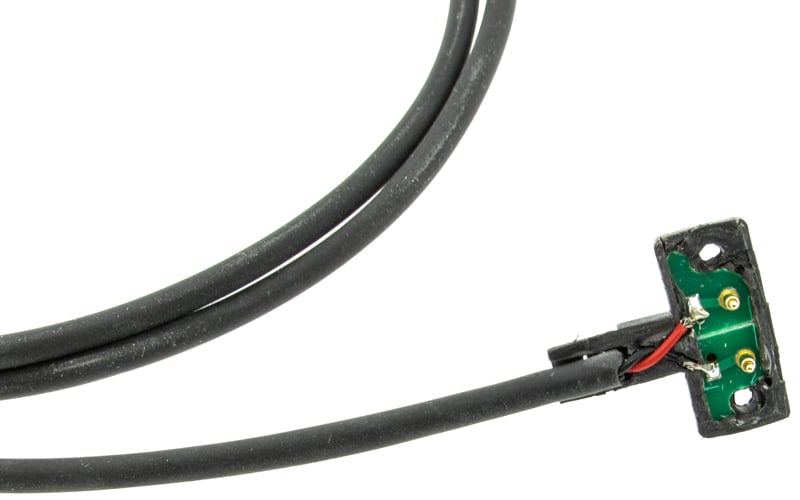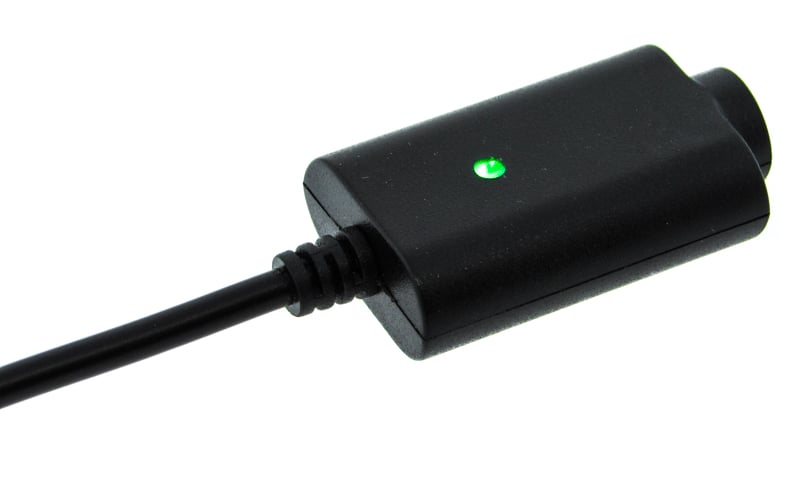Outdoor cables are used in commercial, industrial, and residential applications where they are exposed to a variety of adverse conditions. To survive a lifetime’s worth of abuse, outdoor-rated cables must be designed to stand up to the elements, rough handling, excessive moisture, extreme temperatures, and contaminants like sand or dust. Having an overmold in the design of the cable assembly, the cable terminations can be sealed and ruggedized allowing for several design risks associated with outdoor use to be addressed in an economical fashion.
Most commonly, overmolds are used to seal the backside of connectors where terminals are crimped and soldered to the cable’s conductors. Overmolding process is quite simple and can be performed in almost any custom shape. Where necessary, high durometer inner molds are designed to help locate and protect the most delicate components within the bundle, increasing the complexity of the overall process. ABS Injection-molded or polycarbonates are manufactured separately and can be incorporated into the final product offering a complete design solution. Specific to these higher complexity overmold designs, PCBs, PCBAs, and LEDs can be encapsulated within an overmold to provide advanced functionality to what would have been a passive or otherwise “dumb” cable.

Custom overmolded cable assembly with embedded PCB.
Environmental Conditions and Custom Cable Assemblies
Long periods of exposure to harsh outdoor conditions can pose a significant problem for outdoor cables. Exposure to direct sunlight, salt water, and extreme temperatures will cause materials to crack, connectors to become damaged, causing intermittent connections or even worse. Custom cable assemblies used in outdoor conditions must be designed to survive a wide range of conditions:
- Rough Handling: If the cable is subjected to repeated mechanical stresses, cyclic bending, sharp corners, run over by motor vehicles, etc., the cable may experience performance anomalies. This includes damage to the connectors, wire jacket, or center conductors. The strain relief may be weakened causing short circuits or intermittent connections.
- Water: When moisture or rain passes the outer jacket, water and condensation can cause short circuits, corrosion, and material swelling. Electrical damage may occur if the circuit is live. Signs of water ingress appear as oxidation on metals or blown-out surface-mounted components.
- Sunlight: The heat load from direct sunlight can increase the ambient temperatures to concerning levels, especially for energized electronics that emit a small heat load. UV light can cause materials to crack and break down, fading colors that are exposed to direct sunlight.
- Temperature Swings: Extreme hot and cold temperatures may cause cable jacketing to break down. Some materials are prone to stiffening at sub-freezing temperatures, accelerating material degradation. Temperature swings cause materials to expand and contract and over time can weaken cable insulation and soldered connections.
- Salt Exposure: Cable assemblies are exposed to salt primarily when used in marine environments. Exposure to road salts can be equally corrosive and should be noted for vehicle or highway applications. Salt exposure can accelerate corrosion, which damages electrical contacts and causes intermittent connections and open circuits.
- Sand and Dust: Abrasive contaminants like sand and dust can scuff the exterior jacket of a cable, wearing down the jacket and creating a leak path. Contaminants can also gum up sealing surfaces, caps, threads, and sockets, resulting in poor cable mates and damaged electrical contacts.
- Deep Hole Drilling: This particular cable assembly is one of the most complicated of all, (even beyond traveling into space). The conditions for deep hole drilling must be prepared for all the above conditions; heat, cold, moisture, rough handling, as well as the added condition of immense pressure from going deep underwater and/or within the Earth. In this special situation and others like it, it is best to contact us directly to go over the design specification.
Outdoor Overmolded Extension Cords with LEDs
Outdoor extension cords are used to power equipment and for machines outfitted with rechargeable batteries. When selecting wire types for portable extension cords, cables are categorized based on their performance standards set forth by Underwriters Labs (UL) and the Canadian Standards Association (CSA).
The portable cable spec is defined by letters with each corresponding to a certain type of performance. For example, wire types such as SJOOW are outdoor low voltage rated oil and water-resistant power cables. The "S" type is a service wire, meaning it can be the primary source of power. The "J" means it is a junior-rated cable in terms of voltage. The “O” stands for either oil-resistant insulation or jacketing. The “W” rating states that the cable is weather-resistant and can be used in damp conditions.
- SOOW types: Service wire with oil-resistant insulation and oil-resistant jacket that is weather and water-resistant. This cable is rated for 600 volts.
- SJOOW types: Service wire with oil-resistant insulation and oil-resistant jacket that is weather and water-resistant. This cable is rated for 300 volts.
- STOW types: Service wire with thermoplastic jacket. It also has an oil-resistant jacket and is weather and water-resistant. This cable is rated for 600 volts.
- SJTOW types: Service wire with thermoplastic jacket. It also has an oil-resistant jacket and is weather and water-resistant. This cable is rated for 300 volts.
- SEOOW types: Service wire with thermoplastic elastomer jacket. It also has oil-resistant insulation and oil-resistant jacket. The cable is weather and water-resistant. This cable is rated for 600 volts.
- SJEOOW types: Service wire with thermoplastic elastomer jacket. It also has oil-resistant insulation and an oil-resistant jacket. The cable is weather and water-resistant. This cable is rated for 300 volts.

Custom overmolded cable assembly with embedded LED.
Custom Overmolded Cables with LEDs & PCBAs
When designing outdoor-rated extension cords, overmolding the cable ends allows for advanced customization to what would have been an otherwise ordinary cable. Discrete components like LEDs and PCBAs can be placed within an overmolded cable to provide additional functionality. An illuminated LED can inform the operator that power is being supplied to the extension cable, helping troubleshoot the circuit. This feature offers increased safety allowing the operator to fully turn off power to the equipment while receiving a visual confirmation that the circuit is no longer energized.
LEDs in overmolded cables can be selected in varying intensities, package sizes, and colors, supporting whatever design requirement exists. LEDs may be positioned behind graphical overlays and legends to backlight icons providing additional status information to the Operator using the cable. Employing red, amber, or green LEDs and pairing these with backlit artwork can help provide advanced diagnostics to the energized connector. The primary challenge when including LEDs within an overmold is how to secure the LED mechanically and electrically such that it functions reliably for years of service.
Through hole LEDs that are fabricated with small lead wires can be soldered or crimped directly to a cable’s conductor. Lap soldering or spliced connectors can be used to properly connect the LED to the circuit, but a way to mechanically mount the LED must be developed to guarantee the LED will function as desired. Positioning the LED within the overmold can be accomplished using a locating mold or other types of high durometer inner mold.
For projects where a higher complexity design is needed, surface-mounted LEDs and other discrete components can be added to the overmolded region of interest. Including a small intermediary PCB within the overmold can help address several design challenges. Small normally open switches like tactile switches can be added to the overmold to allow for additional functionality, like a push to talk (PTT) radio. Adding a PCB or PCBA is straightforward as long as the surface-mounted components can withstand the heat and pressure from the overmolding operation.
Outdoor Overmolded Cable Applications with LEDs and PCBAs
Various types of portable extension cords, power cords, and charging cables can benefit from specialty overmolded connectors. These applications include outdoor battery chargers, marine electronics, and especially the high-powered charging cables for electric vehicles (EVs). While many EVs will charge inside a garage, most times the charging cables must be stretched outside across pavement for vehicles parked by an owner’s home or at a charging station. First, the overmold must be extremely rugged to survive the daily wear and tear on the cable. Additionally, many of these overmolded charging cables have complex design features that include LEDs to show the state of charge (SOC) and other self-diagnostic functions. Status LEDs encapsulated within an overmold may illuminate when charging backlighting a series of icons that are molded within the connector. Some overmolded charging cables also have customized locking features or polarized connectors such as the SAE J1772 to help prevent misalignment of the charging cable.
Before developing a custom outdoor overmolded cable harness, the electrical properties of the system must be carefully studied since the voltage and temperature conditions will vary considerably between applications. Marine batteries are usually based on 12VDC systems and must be charged accordingly. Marine battery chargers and cords must support 12VDC starting or cranking batteries, but also the 12VDC deep cycle batteries that power the vessel’s navigation and bilge systems. These 12VDC chargers are especially important because they power propulsion systems like trolling motors and bow thrusters. EV charging stations require much higher power and range from Level 1 chargers that offer the typical 120 VAC from a standard outlet to Level 2 chargers that operate at 240VAC, which is comparable to the power of large home appliances, to Level 3 superchargers that provide fast charging at supply voltages of up to 800 VDC. SAE J1772 connectors will however only support Level 1 and Level 2 charger types.
Summary
Developing outdoor rated overmolded cables for power management applications presents several design challenges. Including discrete components such as LEDs or normally open switches within an overmold and pairing these items with a custom PCBA can exponentially increase the complexity of an overmolded cable.
While adding these features will raise initial costs and increase lead times, the eventual cable design may offer the User several design features and create a competitive advantage over the standard outdoor cables that have no active electronics. Adding self-diagnostics, state of charge information, and even a simple “ON” or “OFF” status LED are a few of the ways a full-service manufacturer like Epec can help bring these ideas to market. Early engagement with cable supplier such as Epec can help develop, design, and manufacture custom overmolded cables, while keeping costs and lead times down.
Key Takeaways
- Overmolding protects against harsh environments: By sealing connectors and terminations, overmolded designs prevent damage from moisture, UV exposure, temperature swings, and contaminants like salt, sand, and dust.
- PCBs and LEDs add functionality: Integrating PCBAs and LEDs into overmolded cables can transform them from simple passive connections into “smart” assemblies that provide diagnostic feedback, status indicators, and improved safety.
- LEDs enhance usability and safety: Embedded LEDs can show power status, state of charge, or system diagnostics, reducing troubleshooting time and ensuring operators know when equipment is energized.
- Design challenges require careful planning: Securely mounting LEDs and PCBAs within an overmold requires specialized tooling, proper heat and pressure tolerance, and mechanical support to ensure long-term reliability.
- Applications span multiple industries: From marine battery chargers to EV charging cables and heavy-duty extension cords, outdoor overmolded cables with integrated electronics are increasingly essential for rugged, high-performance power solutions.
















